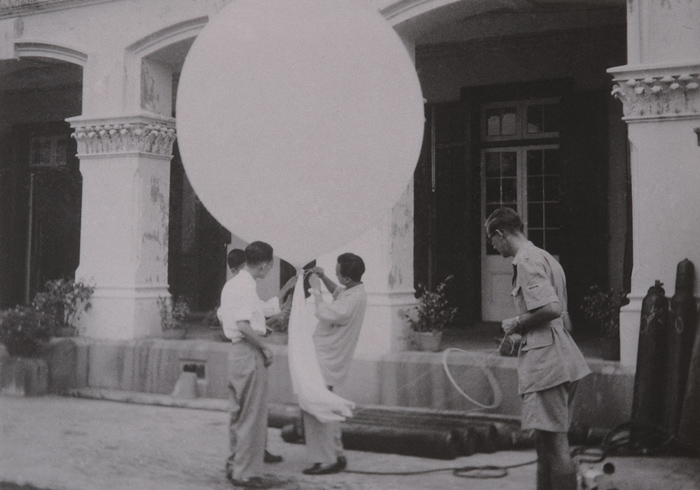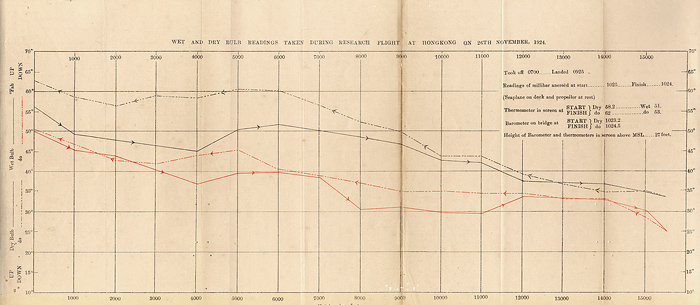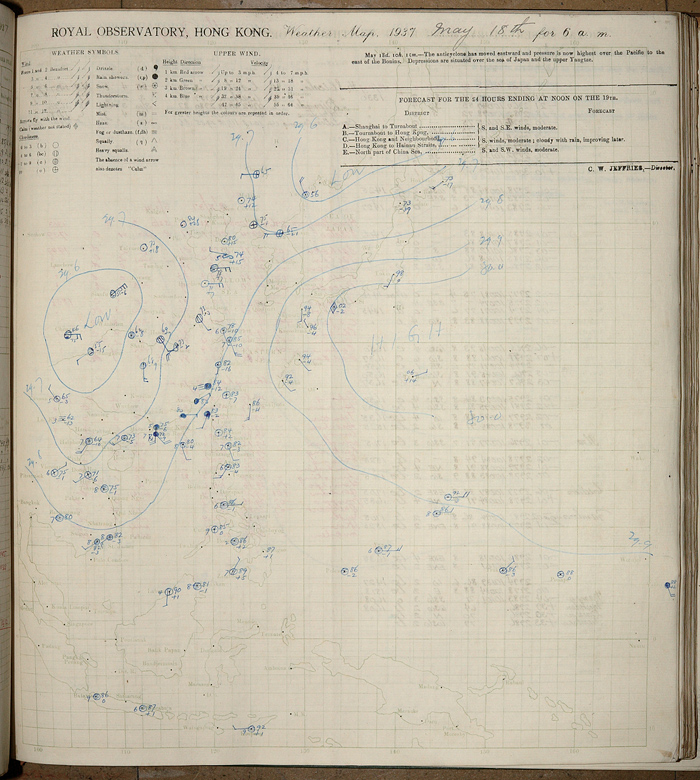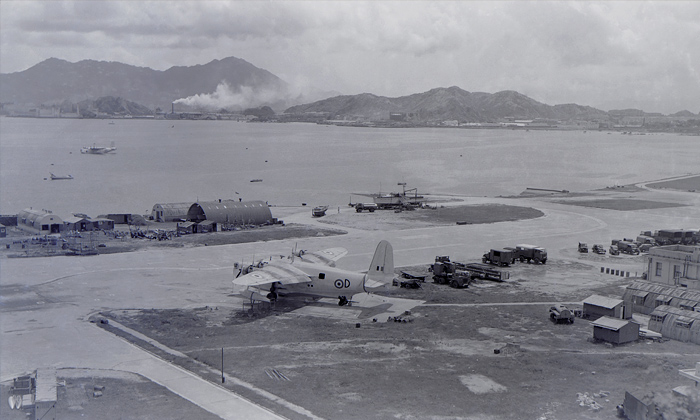HKO - Under the Same Sky 130 Years - Display Area 4
Display Area 4 : Evolution of the Observatory before WWII - Guardian of the Sky
Display Area Introduction
With the development of the aviation industry in Hong Kong from the 1920s and the opening of the Kai Tak Aerodrome in 1925, the Observatory began upper air meteorological monitoring to support aviation industry needs. In 1921, the Observatory started using hydrogen-filled pilot balloons and theodolites for upper air wind observations in Tsim Sha Tsui. In 1936, the Observatory began to provide weather summaries for the Far Eastern region to the Kai Tak Aerodrome and airline companies, in addition to hourly meteorological reports. Charts of en-route meteorological reports were also prepared for the reference of pilots. The Observatory's aviation forecasting service began in 1937, followed by the full operation of the Airport Meteorological Office at the Kai Tak Aerodrome in 1939.
Observatory's staff about to release a weather balloon for upper-air sounding at the Headquarters, Tsim Sha Tsui. Photograph around the late 1940s.

Temperature readings collected by two Flying Officers from the United Kingdom during their research flight over Hong Kong on 26 November 1924.

Weather chart of 18 May 1937 for use by pilots.

The Kai Tak Aerodrome, 1950s.
Collection of the Hong Kong Museum of History
